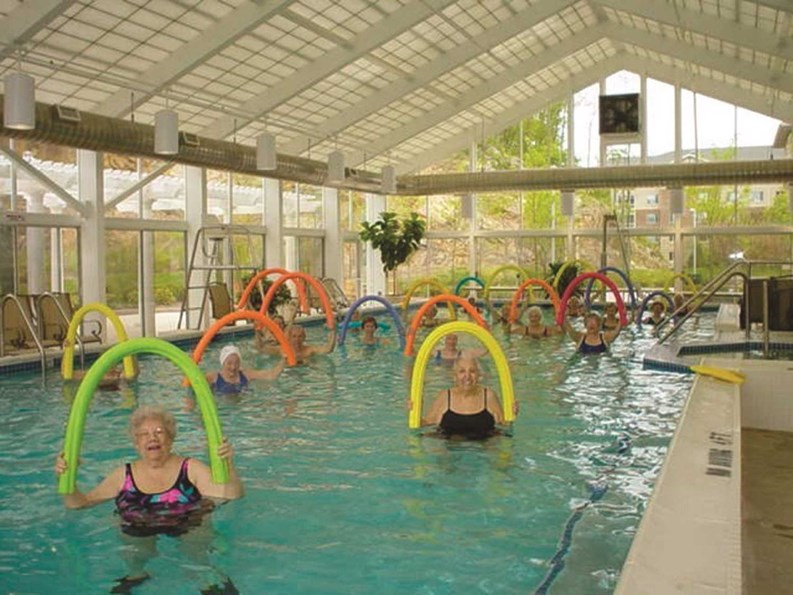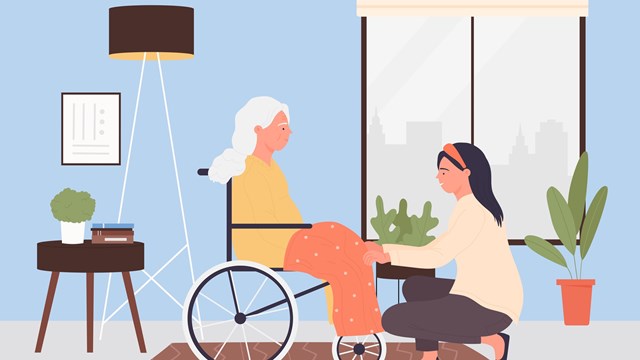Many of us, whether we like to admit it or not, have certain images or ideas pop into our heads when we hear the term “senior citizen.” Some are quaint—slow-motion shuffleboard tournaments, for example, or spirited rounds of Bingo. Others are less comforting—elderly loved ones either struggling to live independently, or forced to enter sterile, lonely nursing homes to be cared for by strangers.
There are other possibilities, however. Studies have suggested that older people do far better physically, mentally, and emotionally if they are actively engaged with one another and with their community—and the vast majority of aging adults would likely vote to stay in their homes, living independently, for as long as they possibly can. If your board administers a community where many residents are approaching or are at retirement age, it may be time to think about the kinds of changes your HOA or condo could make in order to serve those residents more effectively. One option might be to establish a NORC.
Aging in Place
A NORC—or Naturally Occurring Retirement Community—is the opposite of a planned retirement community. NORCs are communities, neighborhoods, or buildings that evolve naturally into concentrations of older adults. If an association or development was built in the 1950s, there’s a good chance that most of the original members of the community would now be in their ‘60s, and the community could be considered a NORC.
While not all NORCs band together to create a support structure for their aging residents, many do step up to the plate to implement programs, policies, and protocols that keep older residents in mind, offering services and improving overall quality of life.
“Traditionally a NORC program provides supportive programs that help folks age in place, and depending on what type of environment, different services may be offered,” says Karen Alexander, the program director for the Lake Hiawatha NORC, which is called Parsippany LIVE, for Lifelong Involvement for Vital Elders. “Much of America is going to grow old in the suburbs. If we can figure out how to support older people in the suburbs, we can really change the face of aging in this country.”
“The idea of bringing more services into a place where people are aging makes a lot of sense, but getting the services there has proven very hard,” says Susan Reinhard of the Rutgers Center for State Health Policy in New Brunswick. “We have what is known as an ‘institutional bias’—as soon as you need help, you go to an institution.”
A fundamental goal behind a fully-actualized NORC is to keep people out of expensive institutions and help them function in their own homes. The roles of NORC programs are evolving however, and each one develops differently.
What NORCs Offer
Services offered by a NORC can range from bringing in maintenance people to offering health services to creating a menu of exercise classes. There could be transportation choices, conferences or clubs for the community members.
“When you get into newer [NORCs], they actually have restaurants, golf courses and things like that,” says Bill Hanley, immediate past president of the New Jersey Association of Realtors (NJAR), “They run activities. They have buses for people to go places, bike paths...a whole number of options.”
The social and recreational programs provided in a NORC are perhaps the most common, most popular offerings. According to program administrators, they’re also some of the most beneficial.
“We have a responsibility to keep people engaged in the community, and wanted to give them opportunities to engage and give back and benefit,” Alexander says.
In the Beginning
NORCs were first developed in New York City in the 1980s, when aging experts identified growing populations of older residents in large apartment buildings and developed programs to help them stay in their homes, rather than move to some sort of managed care facility. In these classic NORCs, nurses and health care programs go to the buildings and schedule recreational activities to keep residents active and create a sense of community.
There are currently eight suburban NORCs in New Jersey, including three run by Jewish Family Services.
“Our agency has had three NORC sites in Passaic County—two in Clifton and one in Passaic, since September 2005,” says Esther East, director of Jewish Family Services in Clifton. “This program model can easily be replicated in other sites with a committed staff and resident participation at relatively low cost per person.”
The New Jersey NORCs were largely funded as a demonstration grant from the Federal Administration on Aging. The funding, which was matched by space provided in each site, enabled them to bring social work, nursing and exercise programs to each community.
“The funding was designed to demonstrate that we could improve the quality of lives of senior citizens, decrease social isolation, prevent health deterioration and be available to respond to crisis before they became life threatening if we brought services to the seniors,” East says. “In addition, we transported the residents to a central program area—our local Jewish Community Center—each week. There they also had an array of services: exercise programs, discussion groups, a low-cost healthy lunch, and contact with social workers on a regular basis. Finally, the program offered a monthly special program, such as a lecture, a concert, or a trip.”
According to East, this combination of activities and resources enables residents to feel less isolated, and offers them support when faced with personal crisis such as a diagnosis of a severe illness or the death of a spouse. She says it has also restored a sense of hopefulness in the lives of many who were facing their latter years with resignation rather than excitement.
“Most people want to remain in their own homes,” East says, “but to make that possible, we need enough of these NORCs and other housing alternatives across the suburbs to take care of them.”
Not as Simple as ABC
If and when a decision is made by a community to officially declare itself a NORC, it’s something of an involved process. You need to get the community to agree to the move, and there are state laws that must be met in order to qualify for certain programs and funding.
“One of the biggest challenges is creating a NORC’s council and involving consumers in the decision-making process and implementation of the program,” says Alan Sweifach, director of strategic planning and allocations for the UJA Federation of Northern New Jersey, a Jewish federation which operates a NORC. “We were able to get the professionals together on a regular basis and came up with what we thought was needed, but it would have been better to get involvement from the older adults themselves.”
Another challenge is arranging and providing the all-important cultural, recreational and educational services to those who have limited mobility and can not go far beyond their own homes. Then there are the “hidden elderly”—those who need services but do not know how to access them.
“If a current condo community wanted to turn into an adult community, they would have a few challenges on their hands,” says Hanley. “They would have to change bylaws to make it an age-restricted area. Anyone who owns who wouldn’t be that age could no longer live there.”
Other Living Options
Obviously, NORCs aren’t the only housing option for older adults. In the state of New Jersey there are plenty of non-NORC communities that offer a variety of services for active seniors.
“There are all sorts of amenities that we provide seniors that a regular condo community that just turned over [into a NORC] doesn’t,” says Madeline Hogan, director of marketing of Seabrook, an Erickson retirement community in Tinton Falls. The Catonsville, Md.-company develops and manages residential communities in Illinois, Maryland, Massachusetts, Michigan, New Jersey, Pennsylvania, Texas, and Virginia, which in total are home to more than 16,000 people.
Catering to members of the same age group as traditional active adult communities, Erickson’s Continuing Care Retirement Communities (CCRCs) offer many different floor-plans and service packages for residents to choose from—but with a twist.
“What we have is a town within a town. We have three restaurants, a medical center, a pharmacy, a pool, a fitness club, a computer room, a bank. You pay one monthly bill and you move in to a community that’s filled with 130 clubs and activities, plus all the health care you will need.”
The good thing about a place like Seabrook is that even if someone can truly no longer live independently, they still have a home for life. “If they need to go to an assisted living or nursing facility, that’s here as well,” Hogan says.
The Last Word
Although there are some grants out there, total funding for NORCs doesn’t entirely exist yet. So, if a community decides that turning into a NORC is right for them, they need to have a plan in place for the funding. Alexander says that sometimes you can get volunteers from the neighborhood or reach out to other non-profit institutions for help on programs.
Underlying the entire concept of NORCs is the philosophy that seniors have a lot to offer their communities and each other, and shouldn’t be overlooked or under-served simply because they get older. If given the choice, the majority of older Americans would likely prefer to stay active in some capacity, whether it be work or play—and by creating services and programs within a NORC, they can have those opportunities and reap their benefits.
“It’s to keep people aging in place and remaining active for as long as they can, and to minimize social isolation,” Sweifach says. “That’s so important.”
Keith Loria is a freelance writer and a frequent contributor to The New Jersey Cooperator.







Leave a Comment